Introduction
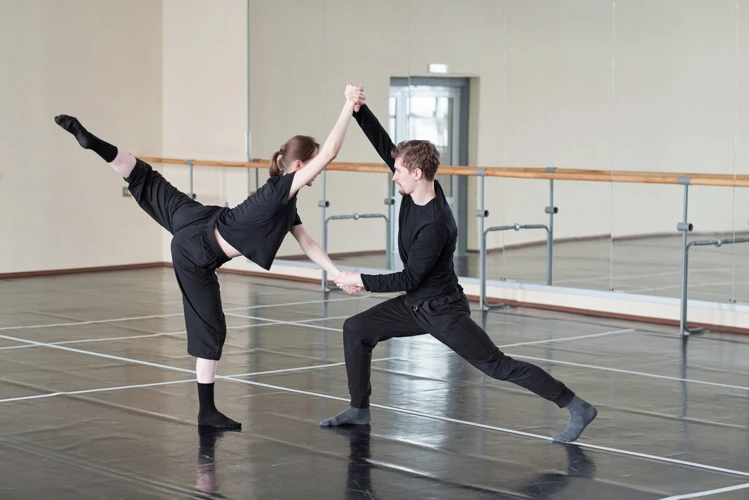
Contemporary dance is a fluid and dynamic art form that allows for a wide range of movement and expression. With its roots in modern dance and post-modern dance, contemporary dance is constantly evolving and incorporating new techniques. For dancers looking to perfect their craft, there are five essential contemporary dance techniques that should be mastered. From weight shifts to improvisation, each technique offers a unique challenge and opportunity for growth. Let’s dive into these techniques and explore how to master them.
What is Contemporary Dance?
To fully understand the techniques used in contemporary dance, it’s important to first have a grasp on what contemporary dance is as a whole. Contemporary dance is a style of dance that emerged in the mid-20th century as a reaction against more traditional forms of dance, such as classical ballet. It is a genre that allows for more freedom and experimentation in movement, often combining elements of various other styles such as modern, jazz, and even hip-hop.
Contemporary dance is heavily influenced by the music it’s performed to, with dancers using the rhythms and melodies to inspire their movements. It is a form of dance that often tells a story or conveys a message, with dancers using their bodies to portray emotions and ideas.
One of the defining characteristics of contemporary dance is the emphasis on organic, fluid movements. Unlike more rigid dance styles, contemporary dancers often incorporate movements that start from the core and ripple outwards through the body. This allows for a wide range of motions, from long, sweeping gestures to sudden, sharp movements.
As contemporary dance has evolved over the years, it has grown to include a wide variety of techniques and styles. Some choreographers focus on more traditional elements of dance, while others incorporate more experimental and unconventional movements. Regardless of the approach, contemporary dance continues to be an innovative and exciting form of artistic expression.
If you’re interested in learning more about the evolution and impact of contemporary dance, check out our article on the evolution of contemporary dance, or explore the works of some of the most influential contemporary dancers in our article on 10 contemporary dancers to know.
Technique 1: Weight Shifts
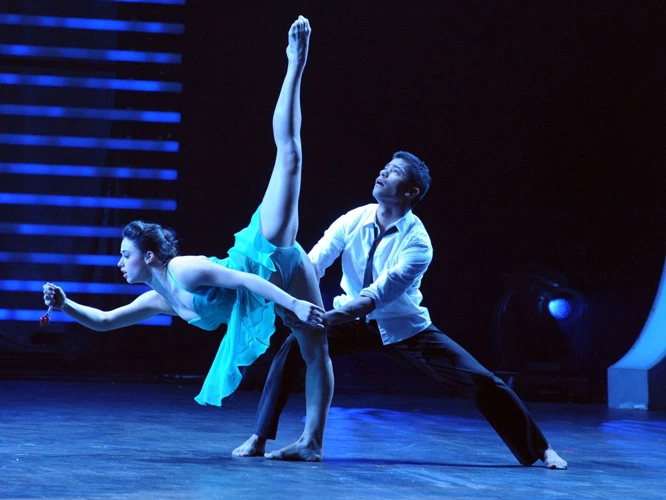
Contemporary dance is a versatile art form that combines various dance styles, including ballet, jazz, and modern dance. It allows dancers to explore and express themselves through movement in unique and creative ways. In this section, we will delve into the first technique that every contemporary dancer should master – Weight Shifts.
Weight Shifts are an essential component of contemporary dance, and they require a dancer to shift their weight from one part of the body to another smoothly. This technique creates a continuous flow of movement and helps dancers maintain balance and control while moving. Before we dive into some exercises to master weight shifts, let’s take a closer look at what they are and why they are so crucial for contemporary dance.
If you’re interested in learning more about contemporary dance, check out our article on the relationship between music and contemporary dance or our comparison of contemporary dance and other dance styles. You may also be inspired by the work of famous choreographer Pina Bausch or interested in exploring the role of improvisation in contemporary dance.
What are weight shifts?
Weight shifts are a fundamental aspect of contemporary dance. They involve shifting one’s weight from one body part to another; this can be done quickly or slowly and can involve a transfer of weight from one foot to another or from foot to hand. Weight shifts allow for fluid movement and are used to create a sense of flow and continuity in a dancer’s performance.
In contemporary dance, there are various types of weight shifts, including contraction and release and fall and recovery. Contraction and release involves a tightening of the muscles followed by a release, which creates a distinct change in the body’s weight distribution. Fall and recovery, on the other hand, involves a sudden collapse followed by a quick recovery, which creates a sense of fluidity and momentum.
To master weight shifts, a dancer must develop their balance and control. They should also work on improving their core strength, as a strong core is essential for maintaining control during weight shifts. Additionally, dancers must learn to listen to their bodies and understand how subtle movements affect their weight distribution.
Here are a few exercises to help dancers master weight shifts:
| Exercise | Description |
|---|---|
| Weight transfer | Stand with feet hip-width apart and shift weight from one foot to the other. Repeat several times, gradually increasing speed. |
| Plie | Starting in first position, bend the knees and transfer weight to the balls of the feet. Slowly rise back up to standing position, focusing on maintaining balance and control. |
| Rolling through the feet | Stand with feet hip-width apart and slowly roll through the feet from heel to toe, shifting the weight with each roll. Repeat several times, gradually increasing speed. |
By mastering weight shifts, dancers can create dynamic, fluid movements that make their performances stand out. These techniques have had a significant impact on contemporary dance, helping to make it a popular form of artistic expression today.
Exercises to master weight shifts
To master weight shifts, a dancer needs to develop a strong sense of balance and be able to smoothly transfer their weight from one foot to the other.
Exercise 1: One helpful exercise is to stand in a parallel position and shift the weight from one foot to the other, focusing on keeping the body aligned and the movements smooth. This can be done to music with a consistent beat to make it more rhythmic.
Exercise 2: Another exercise is to do a weight shift with a plié in between. This involves shifting the weight to one foot, doing a plié, and then shifting the weight to the other foot and repeating the plié. This can also be done to music with a consistent beat.
Exercise 3: A third exercise is to practice weight shifts in different directions. This can be done by shifting the weight forward, backward, to the side, and diagonally. This can also be done in a curved pattern, moving around the room and shifting the weight as needed.
These exercises can help a dancer develop a strong sense of balance and control over their weight shifts, allowing them to execute fluid and dynamic movements in their contemporary dance performances.
One contemporary dance company that uses weight shifts extensively in their choreography is Rise, whose performances blend contemporary dance with elements of hip hop and other styles. Another company that incorporates weight shifts and other contemporary dance techniques into their work is Impact Dance, which focuses on fusing dance with technology and multimedia to create innovative performances.
Technique 2: Isolations
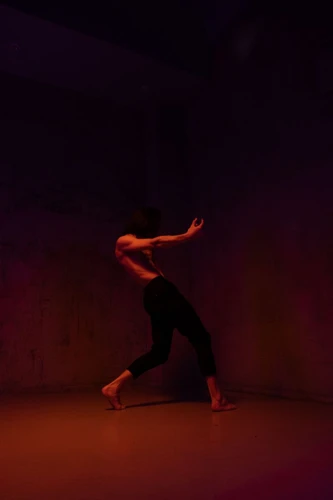
One of the key components of contemporary dance is the ability to isolate different parts of the body, making precise and controlled movements. This technique, known as isolations, emphasizes the importance of body awareness and control. From the head to the hips, each movement is intentional and precise. In this section, we will explore what isolations are and how you can train your body to master this technique.
What are isolations?
Isolations are a fundamental technique in contemporary dance that involves the movement of individual body parts while keeping the rest of the body still. This technique requires a lot of control and precision in movement. Isolations are used to create visually stunning and intricate movements that can be used to express a wide range of emotions.
There are different types of isolations that dancers use in their performances such as head isolations, shoulder isolations, chest isolations, and ribcage isolations. Each type of isolation requires the movement of a specific body part while keeping the rest of the body still. For instance, head isolations involve moving the head in different directions while the body remains still.
Isolations are essential in contemporary dance as they allow dancers to express themselves in unique ways. With precise isolations, dancers can create movements that are visually stunning and captivating for audiences. These movements can add dramatic effects to performances and make them stand out.
To master isolations, dancers need to do a variety of exercises. These exercises can help to improve body control and increase the range of motion in individual body parts. Some useful exercises to master isolations include:
- Head circles: This involves moving the head in a circular motion while keeping the body still.
- Shoulder shimmies: This involves moving the shoulders up and down while keeping the rest of the body still.
- Chest pops: This involves pushing the chest out and then pulling it back in.
- Ribcage isolations: This involves moving the ribcage side to side while keeping the rest of the body still.
By consistently practicing these exercises, dancers can develop more control and precision in their movements, leading to impressive and captivating performances.
Exercises to master isolations
Isolations, which are a vital aspect of contemporary dance, involve moving one specific body part while keeping the rest of the body still. This technique requires a great deal of control and focus on the dancer’s part. There are several exercises that can help a dancer master the art of isolations:
- Head rolls: stand with your feet shoulder-width apart and slowly roll your head to the left, back, to the right, and forward, making sure to keep your shoulders still. Repeat this several times and then reverse the direction of the roll.
- Shoulder isolations: stand with your feet shoulder-width apart and your arms at your sides. Raise your left shoulder up to your ear, and then lower it back down. Repeat the motion several times and switch to your right shoulder. Once you have mastered this, try to raise one shoulder while lowering the other simultaneously.
- Hip isolations: stand with your feet shoulder-width apart and place your hands on your hips. Move only your hips to the left, back, to the right, and forward, while keeping the rest of your body still. Repeat this several times and then reverse the direction of the movement.
- Arm isolations: stand with your feet shoulder-width apart and raise your arms out to the sides. Slowly move your left arm in a small circle while keeping your right arm still, and then reverse the motion using your right arm. Once you have mastered this, try to move both arms in opposite circular motions simultaneously.
- Torso isolations: stand with your feet shoulder-width apart and your arms at your sides. Place your hands on your hips and twist your torso to the left, center, and right, making sure to keep your feet planted on the ground. Repeat this motion several times.
By incorporating these exercises to your training regimen, you can improve your isolation technique and become a more skilled contemporary dancer.
Technique 3: Floorwork
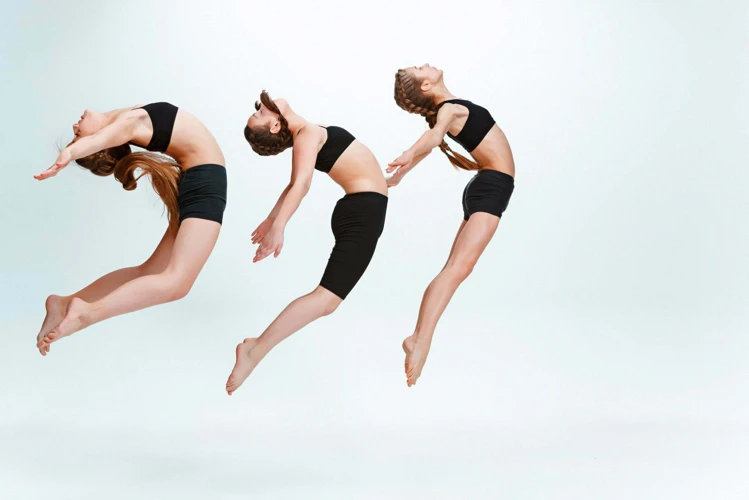
Contemporary dance is an art form that requires a range of techniques to master. One of the most challenging aspects is floorwork, which involves moving and performing choreography on the ground. It requires a high level of physicality, flexibility, and control, making it a daunting technique for many dancers. However, with the right exercises and approach, mastering floorwork can take your contemporary dance skills to the next level. Let’s explore this technique in more detail.
What is floorwork?
Floorwork is a crucial part of contemporary dance that involves moving, rolling, and sliding on the floor using various body parts. This technique helps in exploring different levels, creating dynamic movements, and improving flexibility and body awareness. Through floorwork, dancers can challenge themselves creatively to produce stunning choreography.
One of the main benefits of floorwork is the development of strength and control in the core muscles. The dancer needs to engage their abdominal muscles to stabilize their body as they move along the floor. Floorwork also helps to improve body alignment and balance.
To master floorwork, dancers need to learn the proper techniques and movements. Here are some exercises that can help them improve:
| Exercise | Description |
|---|---|
| Crawling | This exercise involves using the hands and knees to move along the floor in different directions. Dancers need to keep their spine straight and engage their core muscles to avoid slouching. |
| Rolling | In this exercise, dancers practice rolling on the floor using various body parts such as the back, shoulders, and hips. They need to maintain a controlled movement and avoid any jerking motion. |
| Sliding | Sliding involves moving across the floor by dragging body parts such as the feet, hands, or elbows. Dancers need to focus on maintaining a fluid motion and controlling the speed of the slide. |
| Transitions | Transitions are movements that allow the dancer to smoothly switch from one floorwork technique to another. They need to pay attention to their body alignment and movement flow to execute smooth transitions. |
With regular practice, dancers can master the art of floorwork and create stunning choreography that captivates their audience.
Exercises to master floorwork
Mastering floorwork is essential for every contemporary dancer. It requires a combination of strength, control, and fluidity. Here are some exercises to help you improve your floorwork skills:
- Leg extensions: Lie on your back with your legs extended straight up. Slowly lower one leg towards the floor while keeping the other leg straight up, and then switch legs. Repeat for 10-12 reps on each leg.
- Rolling: Sit with your knees bent, feet flat on the ground, and hands behind your head. Roll backwards onto your shoulders, and then use your momentum to roll back up to a seated position. Repeat for 10-12 reps.
- Plank to kneeling: Begin in a plank position, and then slowly lower yourself down onto your hands and knees. Slowly raise yourself back up into the plank position. Do 10-12 reps.
- Knee slides: Start on all fours with your knees slightly apart. Slowly slide one knee out to the side and then back to center, then repeat with the other knee. Do 10-12 reps on each side.
- Split rolls: Start in a split position and then roll onto your back. Use your momentum to roll back up into a split position. Repeat for 10-12 reps.
Remember to engage your core and use your breath to help control your movements during these floorwork exercises. With consistent practice, you’ll be able to incorporate these skills into your contemporary dance routines with ease.
Technique 4: Partnerwork
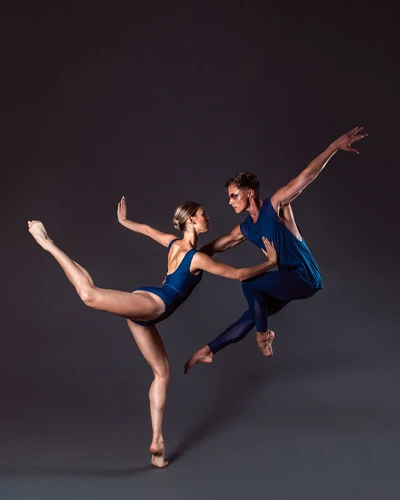
As dancers, we often have the opportunity to work alongside others in creating beautiful and engaging performances. One way to do this is by exploring the technique of partnerwork. This involves working with a fellow dancer to create a sense of connectedness, balance, and trust. Through various lifts, holds, and movements, dancers can enhance their ability to communicate and work with others on stage. Let’s take a closer look at what partnerwork entails and how it can be mastered.
What is partnerwork?
Partnerwork in contemporary dance refers to the technique of collaborating with another dancer to create movements together that rely on trust, communication, and a strong physical connection. This technique can be incredibly rewarding for dancers, as it allows them to challenge themselves both physically and mentally.
Partnerwork requires a lot of practice and communication between the dancers involved. It is important for the dancers to develop a sense of trust with one another, as they may need to rely on each other for balance or support. This trust can be built through a variety of exercises and drills, which can be modified to fit the dancers’ experience and skill level.
Some common partnerwork exercises include lifts, balances, and synchronized movements. For lifts, one dancer may lift the other off the ground or hold them in various poses. Balances involve supporting one another in stationary positions, sometimes with only one dancer’s weight on the other. Synchronized movements require the dancers to move in harmony with one another, sometimes mirroring each other’s movements exactly.
Partnerwork is a crucial aspect of many contemporary dance pieces, and dancers who are proficient in this technique are highly sought after in the dance community. It allows for more dynamic and visually stunning performances, and can create a unique and memorable experience for audiences.
| Partnerwork in contemporary dance: |
|---|
| Requires trust and communication between dancers. |
| Involves lifts, balances, and synchronized movements. |
| Creates visually stunning performances. |
| Is important in many contemporary dance pieces. |
Exercises to master partnerwork
When it comes to partnerwork in contemporary dance, it’s essential to have a strong connection with your partner and to trust each other’s movements. Here are some exercises that can help you master partnerwork:
- Trust exercises: Before you start working on partner moves, it’s important to build trust between you and your partner. Stand facing each other with your arms out and your palms pressed together. Lean back slowly and gradually increase the amount of weight you put on your partner’s hands. This will help you build trust and learn to let go.
- Weight sharing exercises: In partnerwork, you can use each other’s weight and momentum to create unique movements. One exercise to help you master this technique is to stand facing each other with arms out, one person leading and the other following. The leader will then shift their weight and allow the other person to take their weight while they move their arms and legs freely. Then switch roles.
- Mirror exercises: Mirroring your partner’s movements is an important aspect of partnerwork in contemporary dance. Stand facing each other with one person leading and the other following. The leader will then perform a sequence of movements, which the follower will mirror. This exercise will help you develop coordination and a sense of synchronization with your partner.
- Lift exercises: Lifts are a dramatic and impressive aspect of partnerwork, however, they require strength, balance, and coordination. Start by practicing lifting each other’s legs and gradually work your way up to more complex lifts. It’s important to remember to communicate clearly with your partner throughout the lift to maintain safety.
By incorporating these partnerwork exercises into your dance practice, you can improve your connection with your partner and develop the skills needed to create dynamic and impressive choreography.
Technique 5: Improvisation
As dancers, we often get comfortable with routine and choreography, but there’s something special about letting go and just dancing in the moment. That’s where improvisation comes in. It can be daunting to ditch the structure and plan of choreography, but improvisation can bring creativity and individuality to your dancing. In this section, we’ll explore the concept of improvisation and exercises that can help you master this technique.
What is improvisation?
Improvisation is the act of spontaneous creation through movement. It allows the dancer to explore their own unique style and expression.
Improvisation is a crucial aspect of contemporary dance as it encourages creativity and unpredictability. It challenges dancers to break free from traditional choreography and create movements on the spot.
Benefits of Improvisation
Improvisation allows a dancer to push their boundaries and explore their physicality in ways that they may not have considered before. It also encourages dancers to take risks and embrace their individuality.
How to Master Improvisation
Improvisation is not something that can be learned overnight, but it can be improved with practice. The following exercises can help a dancer develop their improvisational skills:
| Exercise | Description |
|---|---|
| Free Movement | Set a timer for 5-10 minutes and move without any preconceived notions. Let the body guide the movement and see where it takes you. |
| Group Improvisation | Choose a partner or a small group and take turns improvising to different styles of music. This exercise encourages dancers to listen and respond to each other, creating a unique movement dialogue. |
| Prop-based Improvisation | Use a prop such as a scarf, chair, or ball to inspire movement. This exercise encourages creative problem solving and can lead to unexpected movement choices. |
It’s important to remember that improvisation is about letting go and allowing the body to move freely. There are no right or wrong movements, only possibilities waiting to be explored. By embracing the unpredictable nature of improvisation, a dancer can unlock their full potential and take their performances to the next level.
Exercises to master improvisation
Improvisation is a crucial part of contemporary dance, and it’s important for every dancer to master this technique. Here are some exercises that can help you improve your improvisation skills:
- Free-Flow Dancing: This exercise involves playing a piece of music and letting your body move freely to the rhythm. It’s important to not think too much about the movements or choreography, but just let your body flow with the music. This exercise helps build a dancer’s ability to let go of inhibitions and dance freely.
- Call and Response: This exercise involves two dancers. One dancer leads with a movement phrase and the other responds with a different movement phrase. The two dancers continue to alternate leading and responding until the improvisation is complete. This exercise helps build a dancer’s ability to communicate and react to movements in the moment.
- Mirror Dancing: This exercise involves two dancers facing each other. One dancer leads with a movement and the other mirrors that movement. The two dancers continue to alternate leading and mirroring until the improvisation is complete. This exercise helps build a dancer’s ability to stay present and connected with their partner.
- Storytelling: This exercise involves choosing a story or theme and dancing to represent that story. It could be anything from an emotion to a specific event in history. The dancer must use their body to convey the story through movement. This exercise helps build a dancer’s ability to express themselves through movement and build their storytelling capabilities.
Improvisation is a valuable skill for any dancer, as it allows them to create and communicate movements in the moment. By practicing these exercises, dancers can improve their ability to improvise and enhance their overall performance capabilities on stage.
Conclusion
After mastering these five contemporary dance techniques, a dancer can expect to have developed exceptional control over their body and movement. The ability to shift weight, isolate movements, and incorporate floorwork and partnerwork will greatly enhance their expression and creativity as a performer.
Moreover, improvisation will enable dancers to have more freedom and authenticity in their dance style, allowing them to create something truly unique and personal. The mastery of these techniques will not only improve a dancer’s technical skill but will also enhance their ability to convey emotions and connect with the audience on a deeper level.
It’s important to note that mastering these techniques takes time and effort. It requires dedication, practice, and perseverance. However, by consistently working on these techniques, dancers can improve their skills and reach new levels of self-expression and creativity.
In conclusion, contemporary dance offers a vast and rich landscape for expression and creativity. By mastering these five techniques, dancers can take their craft to the next level and create performances that are authentic, emotional, and impactful.
Preguntas frecuentes
Question 1?
What is the difference between contemporary dance and classical ballet?
Answer to Question 1:
Contemporary dance is a more modern and free-form type of dance that often incorporates elements from jazz, ballet, and other styles, while classical ballet is characterized by its precise, controlled movements and traditional choreography.
Question 2?
What are the benefits of mastering contemporary dance techniques?
Answer to Question 2:
Mastering contemporary dance techniques can improve your overall strength, flexibility, and coordination, as well as your ability to express emotion and tell a story through dance.
Question 3?
Can anyone learn contemporary dance, or do you need to have prior dance experience?
Answer to Question 3:
While prior dance experience can certainly be helpful, anyone can learn contemporary dance with dedication and practice. It may take longer for beginners to master the techniques, but it is definitely possible with hard work.
Question 4?
What is the best way to practice contemporary dance techniques at home?
Answer to Question 4:
The best way to practice contemporary dance techniques at home is to set aside dedicated practice time, watch online tutorials or practice along with instructional videos, and focus on perfecting your technique.
Question 5?
What should I wear to contemporary dance classes?
Answer to Question 5:
Wear comfortable, form-fitting clothing that allows for a full range of movement. Ballet or jazz shoes are typically recommended, but bare feet may also be appropriate depending on the class.
Question 6?
What should I expect from a contemporary dance class?
Answer to Question 6:
In a contemporary dance class, you can expect to warm up with stretches and exercises, practice various techniques (such as those covered in this article), and learn and perform choreography.
Question 7?
Is contemporary dance suitable for all ages?
Answer to Question 7:
Contemporary dance can be adapted to suit dancers of all ages and skill levels, so it can be just as suitable for children and older adults as it is for younger dancers.
Question 8?
Can contemporary dance techniques be applied to other dance styles?
Answer to Question 8:
Yes, many contemporary dance techniques can be applied to other dance styles, such as jazz, modern, and hip hop. This can help dancers become more versatile and well-rounded.
Question 9?
How can partnering be done safely in contemporary dance?
Answer to Question 9:
Partnering in contemporary dance should always be done with a focus on safety and clear communication between partners. Dancers should only attempt partnering techniques that they have been trained in and feel comfortable executing.
Question 10?
Are there any famous contemporary dancers who have mastered these techniques?
Answer to Question 10:
Yes, many famous contemporary dancers have mastered these techniques, including Martha Graham, Merce Cunningham, and Alvin Ailey. Learning from these dancers can provide inspiration and insight into the art of contemporary dance.

